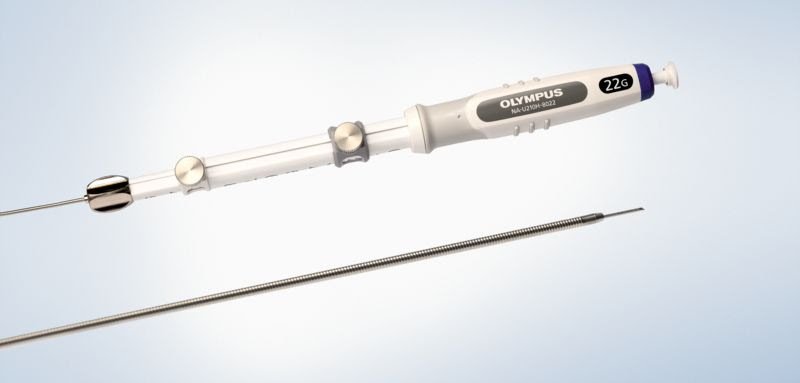
Olympus Corporation (Olympus), a global MedTech company committed to making people’s lives healthier, safer and more fulfilling, announced the launch of SecureFlex, a single-use fine needle biopsy device. SecureFlex will be commercially available in Europe and Japan in Autumn 2025, with a subsequent global rollout subject to regulatory requirements such as product registration and market clearance.
Designed for use with an ultrasound endoscope, SecureFlex supports endoscopic ultrasound-guided fine needle biopsy (EUS-FNB) of submucosal and extramural lesions within the gastrointestinal tract. Its primary clinical application is in the diagnosis of diseases such as pancreatic cancer.
EUS-FNB is an examination technique that combines ultrasound and endoscopy technologies, enabling physicians to obtain tissue or cell biopsies of lesions from areas such as the pancreas that cannot be accessed directly by the endoscope. For example, a needle biopsy may be performed through the wall of the gastrointestinal tract with the ultrasound scope being inserted orally and ultrasound imaging used for sub-mucosal visualisation. Collected tissue samples are then sent for pathological evaluation to determine whether the lesion is benign or malignant.
In recent years, advances in the treatment of pancreatic cancer—including molecularly targeted therapies and immunotherapies—have increased the need for high-quality tissue sampling. For these therapies, it is often critical to obtain larger and higher-quality samples to ensure accurate treatment decisions.
The newly launched SecureFlex has been developed to address these needs, incorporating feedback from physicians. SecureFlex contributes to more precise treatment planning for pancreatic cancer and other gastrointestinal diseases.
Dual-Bevelled Raptor Tip, with its multi-dimensional cutting surfaces, enables the collection of larger, intact tissue samples while preserving cellular architecture through precise tissue execution1 for procedural efficiency. The outer distal cutting surface forms a fine edge to support smooth tissue puncture and the inner proximal cutting surface minimises tissue escape.